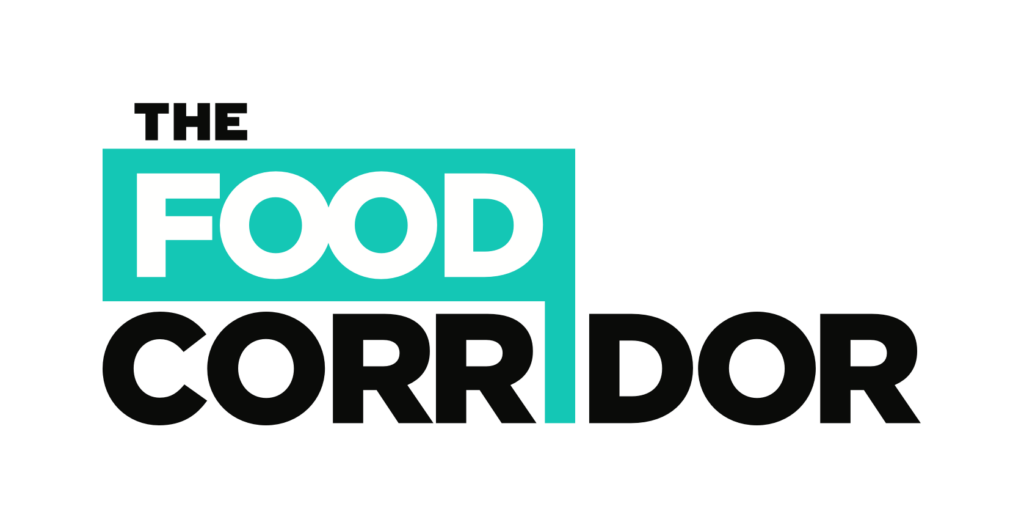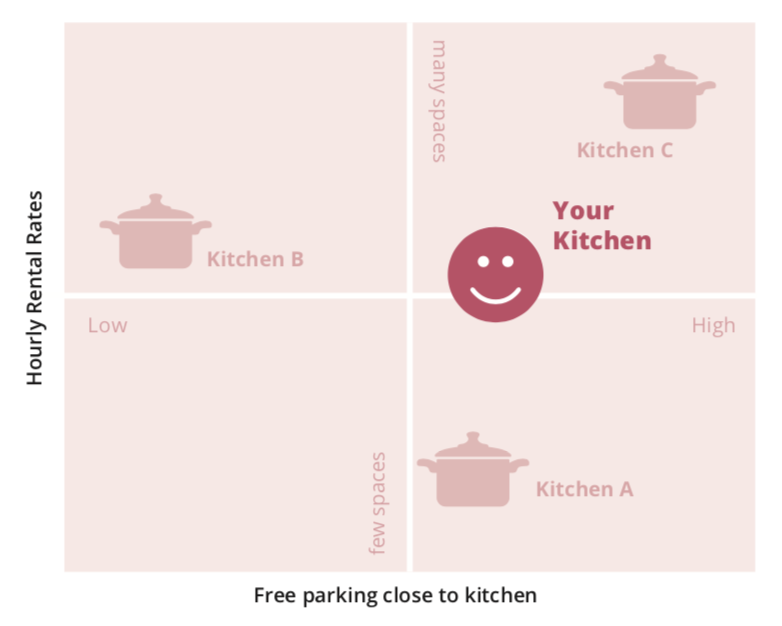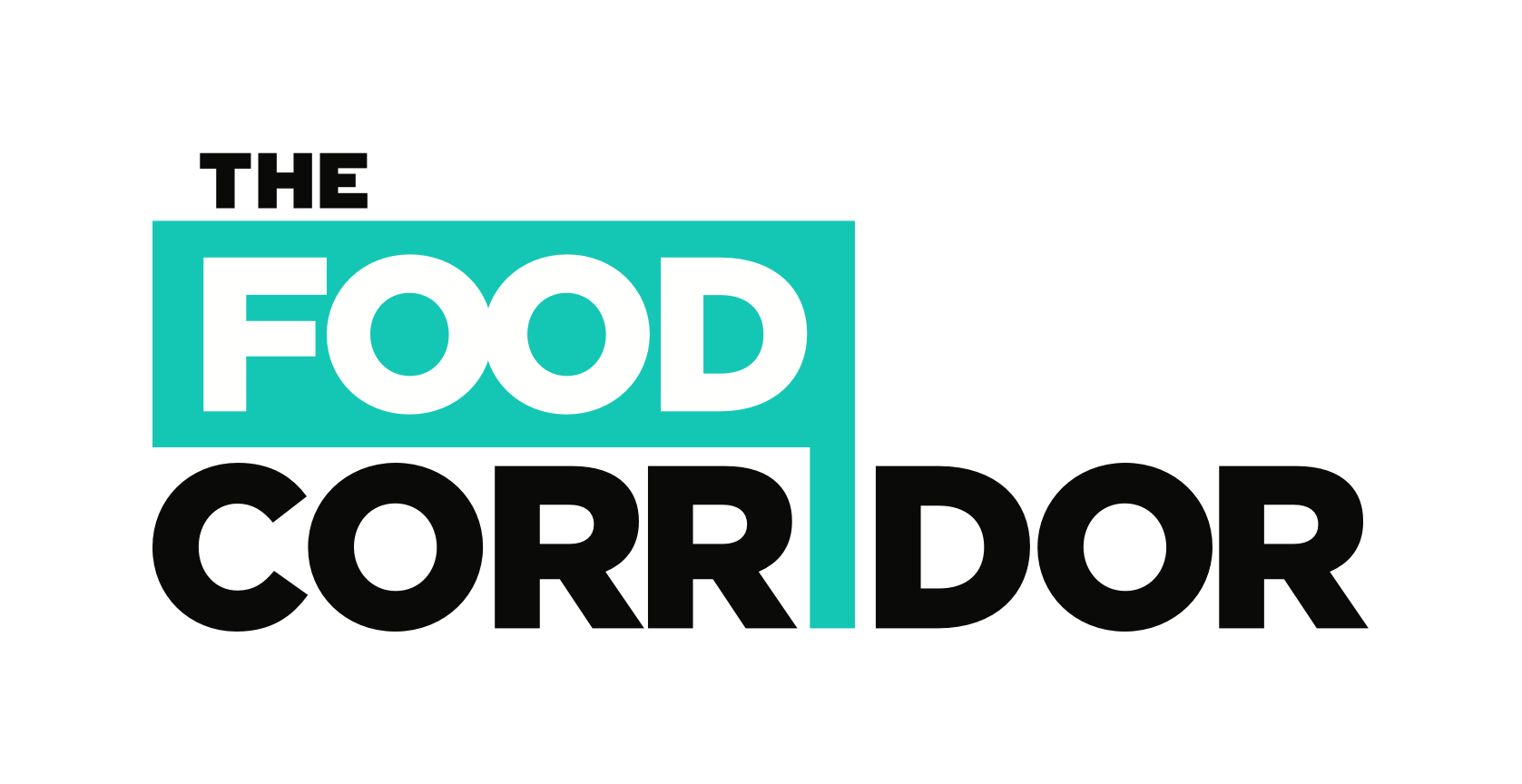Excerpt from The Shared Kitchen Toolkit
Effective marketing is key to operating a successful kitchen. A kitchen’s marketing strategy is the magical mix of product-market fit, appropriate pricing, location, partnership, and promotion. Regardless of whether kitchens are nonprofit, for-profit, or institution-sponsored, it is important for them to develop a brand and marketing strategy that reflects their mission and attracts the right clients to the facility.
Crafting a consistent voice and brand are essential to continually communicating your value to current and potential clients. Establishing your brand is an exercise in determining what makes your kitchen unique and communicating that value through a consistent identity and message. Branding is often thought of as simply the logo and marketing materials, but in reality, your brand encompasses how you operate internally and how you communicate to the outside world.
Communicating Your Value Proposition
At the center of your marketing is how you will communicate your core value proposition. Communicating the primary value of a shared kitchen is an art form, and messaging depends on your potential clients’ perceived needs and values. For instance, providing a clean, licensed facility to clients lowers their barrier to entry into the marketplace. Your kitchen also takes on the responsibility of providing services such as equipment maintenance, dry and cold storage, sewage, utilities like gas, electric, and hot water, pest control, security, and daily supplies that clients would be responsible for managing and paying for themselves if they had a space of their own. The value of these services should be communicated clearly as part of your marketing. You also want to communicate the intangible benefits of being a member of your kitchen, such as licensing guidance, networking, resource referrals, camaraderie, and other community linkages. While your kitchen provides numerous benefits and values, it is important to identify your one unique value proposition that clearly summarizes why potential clients should become your customers. Your value proposition should be written out in a single statement and then integrated throughout your marketing strategy.
Developing Your Marketing Plan
A marketing plan is your roadmap to communicating your value proposition and getting clients into your space. Ideally, your marketing plan is a piece of your larger business plan. Creating this resource in advance helps to set goals for the year and measure your success to see if you have achieved those goals. The detail of your marketing plan varies greatly depending on your kitchen’s size and goals. The overall job of a marketing plan is to clearly answer: Who is our market? How do we reach them? How much will it cost?
Marketing Plan Example Outline
- Executive summary – This summarizes everything in the report so the reader knows what is coming. Write this last as it is informed by the following sections.
- Target market(s) – Who are your target clients? Define each distinct group you identified in your market research and create an example profile or client story for each one. Reasonably size the total addressable market to estimate potential revenue and/or market share from that target group. How many potential clients in this group exist? It may be difficult to find exact numbers but the market research chapter provides tips on researching business data. Estimate the best you can, using data collected for other purposes. This can include asking farmers market managers, Small Business Development Center advisors, health department, and other food business support professionals. Example:
- Client group: Risers – scaling bakers who are leaving their home kitchens.
- Client story: Edwin has been selling sourdough rolls and loaves of bread at his local farmers market under the cottage food law. He wants to increase production (and revenue) and sign a few wholesale accounts.
- Market size: There are 120 licensed bakers in our county and about 30 cottage foods producers categorized as bakers. We want to acquire 20% of these producers.
- Kitchen’s unique value proposition – What value do you offer potential clients? Be clear by focusing on what you do, who you serve, and how you deliver value.
- Value proposition: Kitchen X helps early stage food businesses access a commercially licensed kitchen space to help them grow and scale their businesses through leveraging incubation services.
- Pricing – Be specific. List all pricing options and plans for clients and the target number of clients. Include any special pricing deals as well, such as a free first month or programming and referral discounts. What additional services will you offer and what will they cost?
- Distribution – How will clients access and pay for your kitchen and services? If your kitchen has several locations, include your geographic reach here.
- Positioning – How do you fit into the marketplace, relative to competition? Align this section with #4 (pricing) to ensure your prices reflect your position in the market. What makes you different or unique?
- Promotion – Include all your communication channels and materials. Where will your potential clients see your advertisements and messaging? Hint: Go to where clients already are. For example, if many of your potential clients are on Facebook, promotion on that social media platform may be effective. Explore what industry meetup groups and events may be happening in your community to connect with potential clients face to face. Always measure your return on investment for promotions. Did the promotion lead to conversion? If not, you may want to try other outlets.
- Client conversion – Once a potential client expresses interest, how will you get them over the finish line? Example:
- Client expresses interest.
- Follow up by email asking more about their business and kitchen readiness and asking them to follow your kitchen on social media and sign up for your newsletter.
- If no response, follow up with a second email.
- If the response is appropriate for your kitchen, offer a tour.
- If the tour is positive, ask if they would like to join as a client. Do not be shy—it is better to understand someone’s potential reservations about joining your kitchen than simply hoping they get back to you.
- If they do not want to join, ask them why not? Thank them for the feedback!
- If they do want to join, continue with the client onboarding process.
- Marketing partnerships – Are you co-branding events or space with another entity? Who else is representing or sharing your brand? Do you have any supply or distribution partnerships that directly benefit your clients?
- Client retention strategy – Once a client joins your kitchen, how do you continue communication and engagement to ensure they stay?
- Marketing budget – How much money do you have to spend and where do you intend to spend it? How will you measure the return on investment for your marketing efforts?
You can reach out to your local Small Business Development Center or other small business support organization for help with developing your marketing plan1. Often there are entrepreneurs or professionals-in-residence whose job it is to help kitchens like yours launch their dream and find success. If you have the budget for someone to develop a marketing plan, ensure there are clear expectations and defined terms of engagement.
If you are on a tight budget and are DIY-ing your marketing strategy, here are a few tools to help:
- Example marketing plan. The Small Business Administration offers an abbreviated marketing plan example.2
- Marketing plan template. Business Development Bank of Canada has a downloadable PDF marketing plan.3
- Resource list. Condiment Marketing Co. specializes in food-specific marketing and provides a list of free resources that includes image editing and email marketing tools.4
1 https://www.sba.gov/tools/local-assistance/sbdc
2 https://www.sba.gov/sites/default/files/2017-07/Sample%20Marketing%20Plan%20(for%20508%20remediation).pdf
3 https://www.bdc.ca/en/articles-tools/entrepreneur-toolkit/templates-business-guides/pages/marketing-plan-template.as
4 http://condimentmarketing.com/resources/


